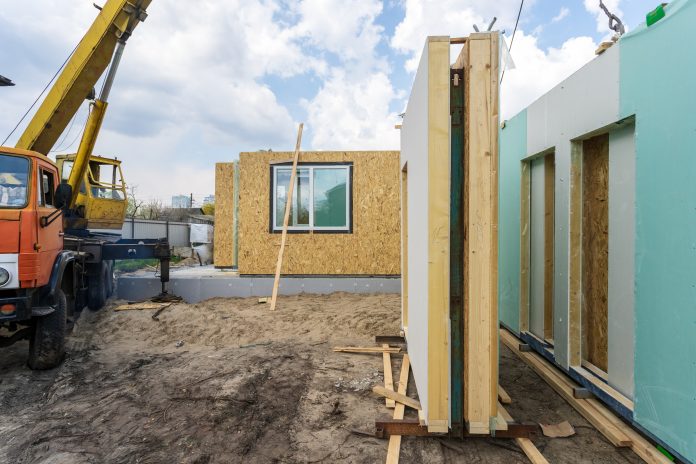John Carter, commercial director for commercial real estate at Aldermore bank, explores the importance of Modern Methods of Construction (MMC) in an evolving industry
Modern Methods of Construction are increasingly being used in the construction industry today. In recent times they’ve moved from being something out of a science fiction novel to reality, particularly in the construction of units such as student accommodation and hotels.
To some lenders, MMC is still relatively unfamiliar so they tend to take a conservative approach when deciding whether to invest in such projects. Yet the primary consideration for any lender should be the quality of the project making MMC not something to overlook as long as certain standards and criteria are met.
What is MMC?
MMC is a wide-ranging term that covers many different types and techniques of construction. Generally, it involves precision off-site manufacture engineering of either key components (a panelised system) or whole sealed units up to first fittings (wiring and plumbing) in a factory environment; with some methods mirroring that of the automotive industry.
These flat pack components or whole units are then transported and positioned on site. This means houses are usually quicker to produce, at a lower cost and have a much lower carbon footprint – for example, they use less water and cement compared to traditional construction methods.
MMC has an important role in the UK
There’s growing recognition that MMC has an important role to play in helping the UK build more houses. The House of Commons’ Housing, Communities and Local Government Select Committee’s report from June 2019 on MMC, for example, noted that the Government’s target of building 300,000 new houses a year by the mid-2020s won’t be met using traditional methods alone; citing issues such as a shortage of skilled workers and availability of traditional materials. “A significant proportion of homes must be built using modern methods of construction (MMC) if we are to meet the target to deliver 300,000 homes annually,” the report stated.
In the UK, many housebuilders are starting to adopt MMC practices such as modular housing. Modular housing involves various components being made in advance, then put together on site. This allows them to be built in a fraction of the time of traditional construction methods.
In addition to taking less time to construct, many modular homes have also proved more environmentally efficient; producing more clean energy than they consume.
Sustainable construction is challenging
Sustainable developments that meet the needs of the present without compromising the ability of future generations to meet their own needs are challenging in a sector which, by its nature, is a big user of natural resources. Yet many MMC techniques can bridge the gap between sustainability and construction practices.
MMC that uses cross-laminated timber (CLT) rather than concrete is one way in which developers are becoming more sustainable. Cross-laminated timber is a structural, prefabricated panel used to form environmentally sustainable walls, roofs and floors across a wide range of structures. It is a robust and widely useable building material with excellent soundproofing, airtightness and fire safety properties.
Importantly, CLT is also a good carbon sink and can be constructed offsite. The first major CLT building in London (Hoxton) was the Stadthaus which is one of the tallest residential timber structures in the world. It took four carpenters just 27 days to assemble the building.
Building standards are paramount when considering MMC projects
Sustainability can be an important indicator of the quality of a construction project. When making any lending decision, the primary consideration should be the quality of the proposed development. Any build must be of high quality in order to meet and retain its value against which funding can be advanced.
One of the stigmas attached to MMC is that if a project takes less time to build, it must be of a poorer quality, compared with traditional methods. These perceptions around MMC trace their roots back to the quality of prefabricated post-war emergency housing, which were notorious for being built to a substandard. Nowadays such stereotypes are out of date, with 21st Century technology delivering better quality, safer, and far more cost-effective homes at the same or, with upscaling, lower cost.
For Aldermore, accreditation under the Build Offsite Property Assurance Scheme (BOPAS) is a critical requirement for us when considering any MMC project. BOPAS is a risk-based evaluation scheme which demonstrates that a property will stand the test of time for at least 60 years – thereby showing that a development meets quality and sustainability considerations. We may also look for other warranties too, such as NHBC certificates for residential properties.
The use of MMC will likely become much more prominent in the future. The current lack of familiarity with MMC techniques is causing some lenders to make risk averse decisions and overlook MMC projects. When making any lending decision, the quality of the build proposal must be paramount.
At Aldermore, we are embracing changes in construction and are committed to working closely with construction firms, housebuilders and property developers to provide funding solutions to deliver the much-needed homes this country needs.

John Carter
Commercial director for commercial real estate














